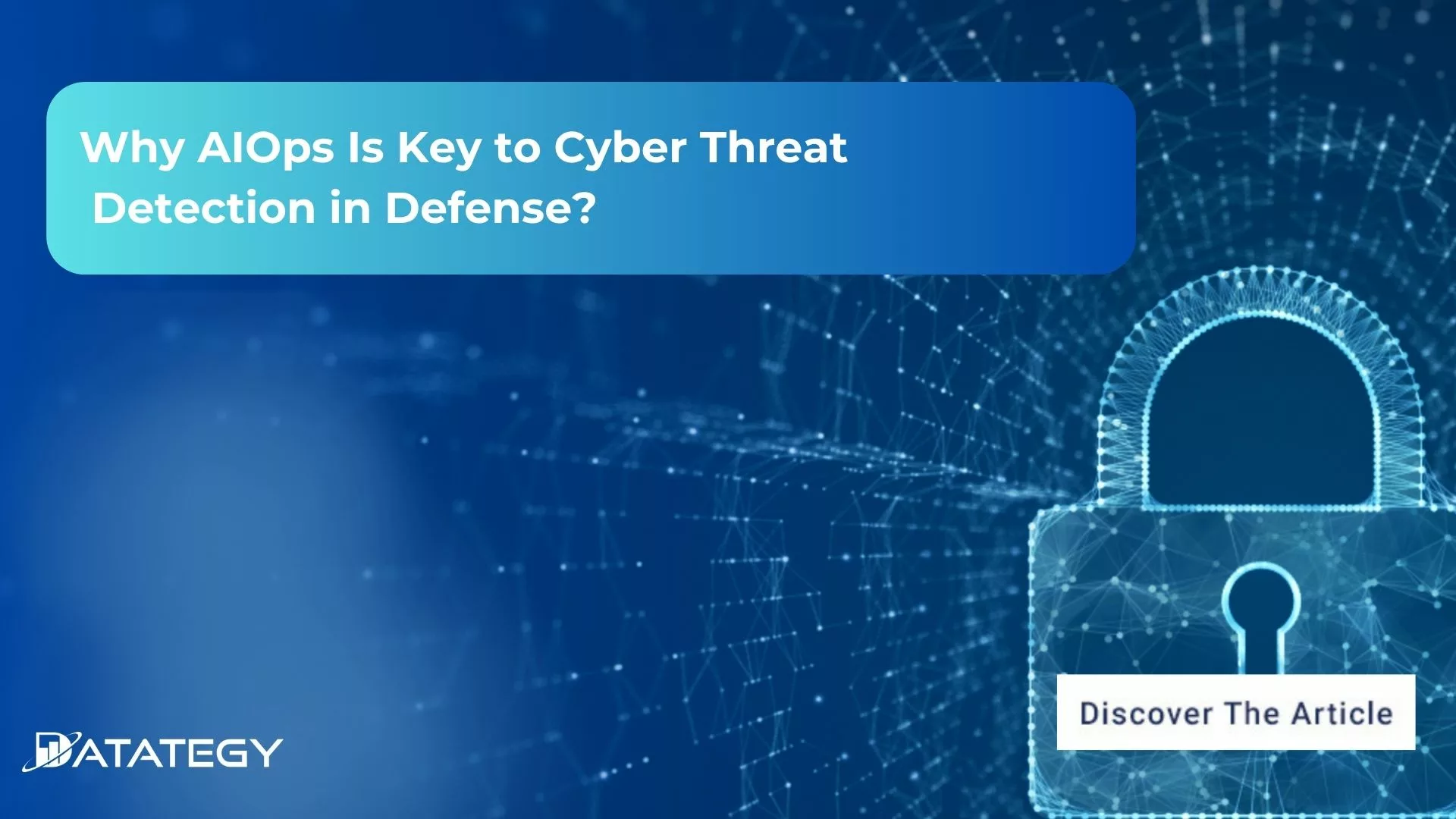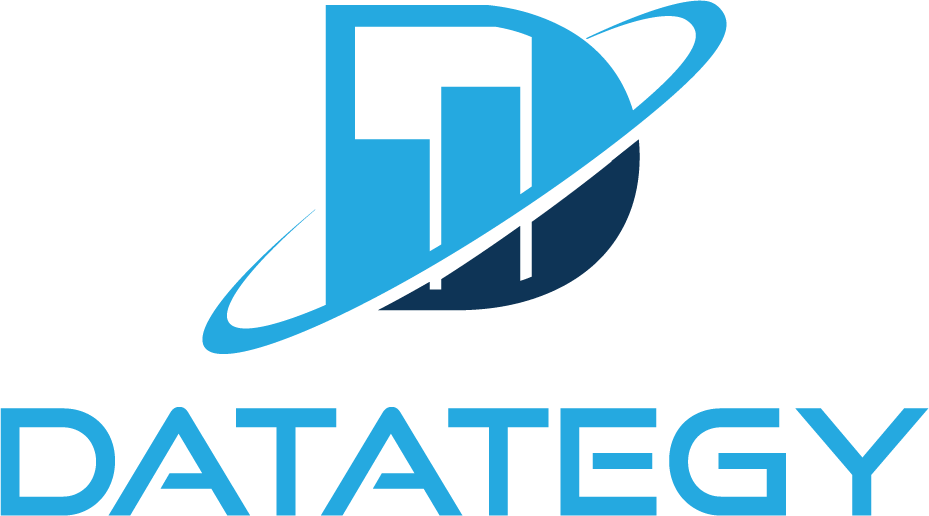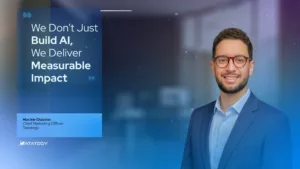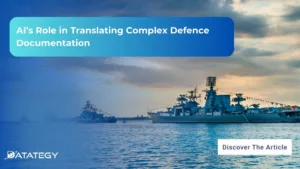We Don’t Just Build AI, We Deliver Measurable Impact Join...
Read MoreWhy AIOps Is Key to Cyber Threat Detection in Defense?
Table of Contents
ToggleIn modern warfare, many threats have emerged, and those related to cyberspace are the most difficult to predict. Unlike traditional threats, cyberattacks can strike silently, without warning, and cause massive disruption to defense systems, communication networks, and critical infrastructure.
In the field of AI, AIOps can play a vital role in upgrading cyber defenses. AIOps, which combines artificial intelligence and IT operations, helps defense and military organisations monitor complex environments, identify risks more quickly, and respond more precisely while minimising the volume of unnecessary warnings.
Fortinet’s 2025 Global Threat Landscape Report highlights a dramatic surge in AI-driven cyberthreats, including a 16.7% increase in automated scanning to 36,000 scans per second, along with a 42% growth in credential-based targeted attacks

In this article, we will define AI in the defense sector, explore how AIOps works, and explore concrete use cases.
What does AIops mean in the Defense Sector
In the defense sector, AIOps, or Artificial Intelligence for IT Operations, uses AI for military IT systems. AIOps uses big data, machine learning, and other AI tools to improve the management of these important IT environments. It shifts from a reactive “fix-it-when-it-breaks” method to a proactive system. This new system can predict problems and often fix them before they affect mission readiness.
The ability to absorb, correlate, and analyse massive amounts of operational data in real-time is the foundation of AIOps in defense. This encompasses everything from cybersecurity alarms and sensor data from multiple platforms to network logs and performance metrics.
AIOps can swiftly identify the underlying cause of issues, spot anomalies that human operators might overlook, and recognise subtle trends by utilising machine learning techniques. It can, for example, anticipate when a crucial piece of equipment might malfunction, allocate resources optimally for processing power in a tactical network, or even identify a sophisticated cyber incursion in progress, enabling prompt action.

At Datategy, we believe that AIOps isn’t just an advantage in defense; it’s crucial. In an era of escalating complexity and dynamic threats, the ability to predict, prevent, and rapidly respond is a prerequisite for maintaining a decisive edge and ensuring mission success.
Thibaud Ishacian
Head of Product - Datategy
Why is it challenging to predict cyber threats in the defense sector?
1- The Increase of Complex Attack Vectors and Advanced Adversaries
The simpler threat landscapes of even ten years ago have given way to an extremely complex and harsh digital battlespace for defense organisations. Instead of isolated instances or unsophisticated actors, we are now facing a persistent, multifaceted attack from a wide range of adversaries, each with unique skills and goals.
In order to obtain a strategic edge or interfere with vital infrastructure, state-sponsored hacking organizations, which are frequently supported by substantial financial resources and highly qualified staff, are at the forefront, conducting sophisticated cyber espionage, persistent reconnaissance, and intellectual property theft.
Using supply chain assaults that compromise reliable software or hardware manufacturers, zero-day exploits, and highly targeted phishing operations that circumvent traditional security protections, their tactics are extremely sophisticated.
2- The Interconnectedness of Modern Military Operations
In addition to offering indisputable strategic benefits, the interdependence of modern military operations also poses previously unheard-of levels of systemic risk. A vast digital ecosystem that includes interconnected tactical systems, logistical networks, information collection platforms, and command and control centres supports today’s defense capabilities.
Because of this complex network, a successful cyberattack on a single, seemingly unrelated component could have repercussions for the entire operational environment. Think about what might happen if a country’s supply chain for vital military equipment were the focus of a clever attack.
A latent vulnerability that could be exploited at a crucial moment could be created by compromising a logistics provider or a single component manufacturer, which could insert hardware backdoors or malicious code into sensitive equipment before it even reaches the front lines.
3- Evolving Defense Strategies
A drastic change in defensive tactics is needed to combat this evolving cyber threat scenario; proactive, adaptable, and resilient security postures must be adopted in place of more conventional reactive ones.
In a world where adversaries are continuously looking for the weakest link and taking advantage of supply chain weaknesses or insider threats, the conventional “castle and moat” security model, which assumes that strong perimeters would keep all threats out, is clearly insufficient. Defense agencies must instead implement a “zero-trust” architecture, which is based on the idea that no user, device, or network element—regardless of where it is located—should be presumed to be trustworthy.
This entails rigorous network segmentation, ongoing identification and authorization verification, and micro-segmentation down to specific apps and services, all of which restrict adversaries’ ability to move laterally once they get a foothold.
What are the key Components of AIops Systems?
- Ingestion and Integration of Data:
provides a thorough understanding of the IT environment by gathering and combining enormous volumes of data from many sources, including logs, metrics, events, and alarms. - Analytics and Machine Learning:
uses sophisticated algorithms to find correlations, trends, and anomalies in the data so that decisions can be made more quickly and intelligently. - Noise Reduction and Event Correlation:
reduces noise by filtering out redundant or unnecessary notifications, allowing teams to concentrate exclusively on urgent problems that require quick attention. - Orchestration and Automation:
expedites problem solving and frees up human expertise for higher-level work by automating repetitive processes and duties like incident response and remediation. - Real-Time Tracking and Displaying:
provides visual tools and dashboards that give real-time information on system performance, health, and new threats for improved situational awareness. - Root Cause Analysis: helps teams handle problems more successfully and stop them from happening again by rapidly identifying the underlying causes of difficulties using AI-driven diagnostics.
- Capabilities for Prediction:
uses past data and patterns to predict possible outages or security incidents before they occur, allowing for proactive management. - Flexibility and Scalability:
Designed to manage expanding volumes of data and adapt to shifting IT infrastructures without compromising effectiveness.

How AIOps Transforms Cyber Threat Detection?
1- Real-Time Threat Identification
Massive amounts of data produced by defense networks, endpoints, apps, and cloud environments are continuously and instantly analyzed by AIOps systems. They are able to identify suspicious activity or anomalies as soon as they arise because of this ongoing surveillance.
AIOps uses machine learning to identify changing patterns of cyber threats, such as anomalous login attempts, data exfiltration, or lateral movement within the network, without the need for human intervention, in contrast to typical security systems that mostly rely on pre-established rules or manual investigations. In defense situations, where delays can have serious operational and national security repercussions, this early detection capability is essential.
The probability of effective containment and mitigation is increased when early detection of minor signs of compromise is possible. In order to enable defense teams to keep ahead of attackers, it changes cybersecurity from a reactive to a proactive posture.
2- Noise Reduction for Focused Alerts
Alert fatigue is a major problem in cyber threat detection. Many of the alarms that security professionals deal with on a daily basis are false positives or low-priority problems. Investigations may be delayed or important risks may go unnoticed as a result of this noise. In order to solve this, AIOps cleverly filters and correlates alerts from many data sources, significantly cutting down on unnecessary or duplicated messages.
AIOps separates genuine security incidents from benign anomalies by utilising AI-driven pattern recognition. Cybersecurity experts are able to concentrate their attention and resources on the most urgent threats thanks to this tailored alerting. Teams can prioritise their tasks, lessen burnout, and enhance the calibre of their solutions as a result.
Research from Datategy shows that AIOps can reduce alert noise by up to 85%, significantly improving analyst efficiency.
3- Automated Correlation and Analysis
Cyber threats usually include a series of connected events dispersed over multiple platforms and time periods; they rarely manifest as single incidents. To build a complete picture of an attack, AIOps platforms automatically correlate various data points, including logs, network flows, endpoint telemetry, and user behaviour. This comprehensive approach identifies intricate attack chains and the underlying reasons for alarms.
In conventional Security Operations Centres (SOCs), manual correlation is laborious and prone to mistakes. By swiftly connecting the dots with advanced algorithms, AIOps helps analysts rapidly comprehend the extent, significance, and source of threats. This thorough analysis speeds up decision-making and gives teams the ability to react with the right actions.
Additionally, automated correlation facilitates advanced threat hunting by revealing patterns and hidden risks that traditional approaches might overlook. Better detection accuracy, quicker containment, and fewer security flaws are the ultimate outcomes.
A study by IBM found that automation and correlation technologies in AIOps reduced incident investigation time by 40%.
4- Predictive Detection
The capacity of AIOps to anticipate cyberthreats before they become real is one of its most potent capabilities. Machine learning models estimate possible security events by analysing attack trends, vulnerability exploit patterns, and system behaviours using previous data. Instead of waiting to respond after an attack, defense teams may proactively detect vulnerabilities and new threats thanks to this predictive capabilities.
Organisations can apply focused defenses, fix vulnerabilities, and modify monitoring to areas of concern by foreseeing threats. This proactive strategy improves overall security posture and lowers the probability of successful breaches.
In order to ensure that cybersecurity teams are ready for potential attack scenarios and are able to implement countermeasures efficiently, predictive detection also aids in resource planning.
5- Reduced False Positives
By using advanced models of machine learning to comprehend context, AIOps significantly alters this dynamic. AIOps learns to distinguish between benign anomalies (such as an employee signing in from a new device) and malicious behaviour (such as unauthorised access attempts or data exfiltration patterns) rather than viewing every odd activity as potentially dangerous. AIOps systems are able to automatically suppress unnecessary warnings and elevate just the most important ones thanks to this contextual understanding.
In addition to increasing operational effectiveness, AIOps lowers analyst fatigue, which is a significant cause of mistakes and burnout in cybersecurity teams, by lowering false positives. Defense security staff may focus on real, high-priority threats instead of wasting hours on insignificant incidents, thanks to this simplified alert system. This improvement is more than just a comfort; it is essential for national security in high-stakes situations like defense, where prompt action is crucial.
According to a 2023 report by Palo Alto Networks, organizations leveraging AI-driven security operations saw a 90% reduction in false positives, dramatically improving response efficiency.
What are the Key Benefits of AIOps for Defense Cybersecurity
1- Enhanced Situational Awareness
Situational awareness in the context of defense cyber refers to being aware of all system, endpoint, and data stream events in real time. By simultaneously absorbing logs, telemetry, network flows, and threat information, AIOps improves this by producing a cohesive, contextual image that is crucial for identifying hostile activity before it escalates into a crisis.
Events that were previously independent, such as a spike in network activity, a suspect login, or an unusual process launch, are continuously correlated by AIOps systems, enabling teams to witness the development of a concerted attack. Imagine combining automated summaries, visual maps, and timely notifications to create a cohesive image out of dozens of dispersed puzzle pieces. This enables defense operators to swiftly understand occurrences and make better decisions when under duress.
2- Reduced Response Time
Every second matters during a cyber crisis. It is imperative that defense systems quickly stop intrusions, stop malicious communications, or quarantine compromised assets. This is accelerated by AIOps’s clever automation and analysis.
In order to prevent teams from chasing ghosts, it first reduces alert sounds. In order to identify the underlying reasons, it then compares signals from innumerable logs and measurements. Analysts can react accurately in minutes rather than hours or days when they have access to actionable intelligence and priority scores.
Some AIOps solutions even initiate response procedures automatically, such as pushing firewall modifications, rescinding credentials, or isolating endpoints. By bridging the detection and mitigation gaps, this digital automation transforms reactive firefighting into proactive defense.
3- Scalability for Complex Environments
Large and dispersed, modern defense infrastructures combine cloud resources, IoT devices, mobile endpoints, and older on-premises systems. It is almost challenging to scale conventional detection and reaction across this terrain.
In complex environments, AIOps flourishes. It behaves consistently regardless of scale or location, automatically processes enormous amounts of data, and adapts its models to new contexts. AIOps maintains its consistency under demand, whether it is coordinating reaction across hybrid systems or correlating global event logs.
Every architectural change eliminates the need for manual rule modifications. Rather, AIOps adapts to new assets or threats by learning from changing configurations. This makes expansions secure and manageable, such as growing to combat networks or deploying across alliances.
4- Increased Analyst Efficiency
Defense analysts, no matter how good, are only human. Time is wasted and morale is damaged by manually correlating threats, chasing false positives, and sorting through repetitive notifications. That is altered by AIOps.
AI-driven operations free up analysts to concentrate on strategic duties like threat hunting, adversary simulation, and defense improvement by filtering noise, adding context to warnings, and even suggesting next steps.
By converting repetitive, unproductive chores into valuable cybersecurity work, AIOps enhances job satisfaction in addition to workload reduction. Analysts have more time to develop, practice, and create proactive defenses, a clear benefit for team morale and security.
5- Proactive Threat Prevention
The transition from reactive defense to proactive threat prevention is one of the biggest changes that AIOps offers to cybersecurity. In the defense industry, cybersecurity has always placed a strong emphasis on incident detection, response, and recovery. However, waiting for something to happen is no longer acceptable in modern warfare, since hackers can produce disruptions that are just as harmful as physical attacks. This is where the game is drastically altered by AIOps.
Predictive analytics and machine learning are used by AIOps to identify trends that may indicate potential hazards. AIOps can predict vulnerabilities, foresee attack pathways, and identify weak points before they are exploited by continuously examining historical data, user behaviours, network activity, and external threat intelligence.
For instance, AIOps can identify a pattern early on if it notices a regular increase in login attempts from a specific area that usually precedes phishing or credential-stuffing attacks. Without waiting for a real breach attempt to occur, security professionals can then proactively block IP ranges, implement multi-factor authentication, or conduct additional research.
How to choose the right AIOps platform?
The first step in selecting the best AIOps platform is to comprehend the unique requirements of your company, particularly with regard to scale, complexity, and cybersecurity considerations. AIOps systems vary; some are intended with a strong emphasis on security use cases, while others concentrate more on IT operations management.
For defense organisations, choosing a platform that can manage large volumes of sensitive data, detect threats in real time, and adhere to stringent security regulations is essential. Start by determining whether the platform can accommodate your present infrastructure as well as your future expansion, taking into account cloud, on-premises, and hybrid environments.
The platform’s smooth integration with your current technologies, such as SIEM, SOAR, endpoint detection, or network monitoring systems, should be a primary concern. When AIOps has complete visibility throughout your ecosystem, it functions at its best. Verify whether the platform can readily absorb structured and unstructured data from a variety of sources and whether it enables creative integrations with your present stack. In order to steer clear of solutions that turn into bottlenecks as your operations grow, you also need to consider scalability and deployment ease.
Leading the data revolution: CDO role in today's organizations
The need for CDOs is expanding as a result of the growing significance of data in today’s corporate environment. Any organization’s success depends on the CDO, who is the primary force behind digital innovation and change.

Streamlining AI with papAI: Key Benefits and Features
papAI is a scalable, modular, and automated AI platform designed for end-to-end ML lifecycle management, seamlessly integrating with existing infrastructures.
Businesses may use papAI solutions to industrialize and execute AI and data science projects. It is collaborative by nature and was created to support cooperation on a single platform. The platform’s interface makes it possible for teams to collaborate on challenging tasks.
Several machine learning approaches, model deployment choices, data exploration and visualization tools, data cleaning, and pre-processing capabilities are a few of these features.
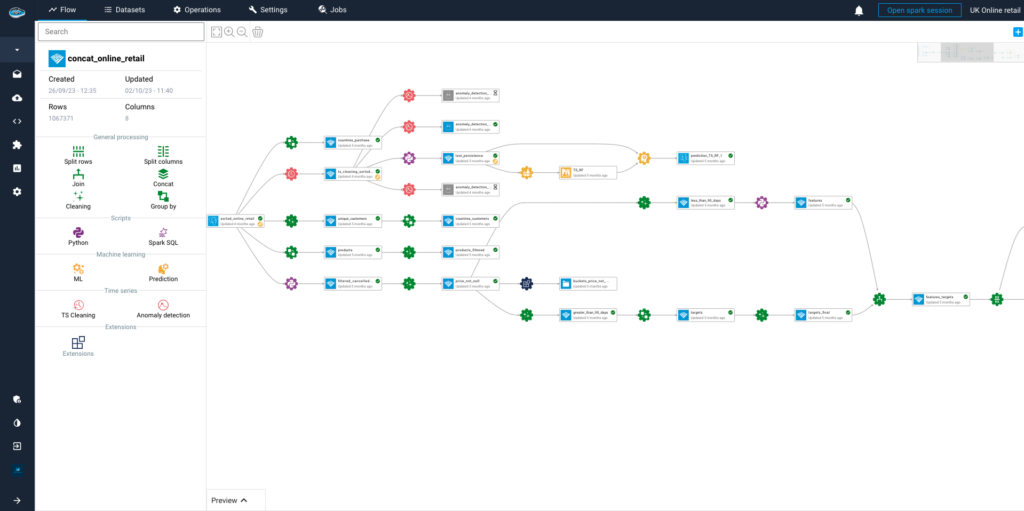
Here’s an in-depth look at the key features and advantages of this innovative solution:
Simplified Model Implementation
papAI Solution greatly simplifies the machine learning model installation procedure by utilising the Model Hub. The main source of pre-built, deployment-ready models from papAI is the Model Hub (which includes Binary Classification, Regression model, Clustering, Ts Forecasting, etc.). Consequently, companies no longer need to start from scratch when developing models. People who use the papAI solution frequently save 90% of their time when implementing AI concepts, per our most recent survey.
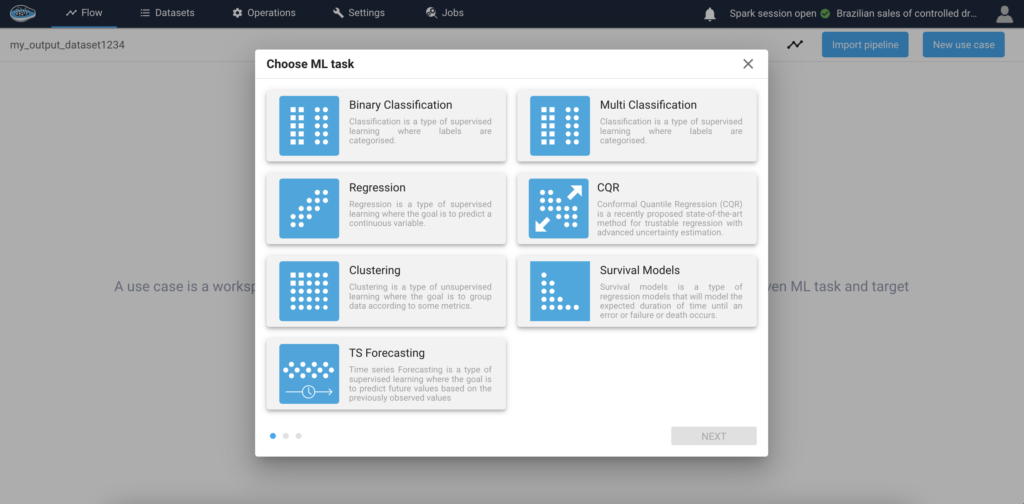
Efficient Model Monitoring & Tracking
With the range of monitoring tools provided by papAI Solution, organisations can keep an eye on the most crucial model performance metrics in real time. Metrics like accuracy, precision, and other relevant indicators can be used by users to monitor the model’s performance and spot any potential issues or deviations. This continuous monitoring guarantees high-quality outputs and makes it possible to proactively identify any decline in model performance. We have shown our clients accuracy of up to 98%.

Enhanced Interpretability and Explainability of the Model
In the past, deep learning and advanced machine learning models have been perceived as “black boxes,” making it challenging to understand how they produce predictions. papAI solution uses state-of-the-art model explainability techniques to directly solve this issue. It highlights the crucial components and traits that influence forecasts and provides insights into the inner workings of the models. The puzzle of how AI models predict the future has been resolved by papAI, which allows stakeholders to see precisely how these algorithms make judgements.
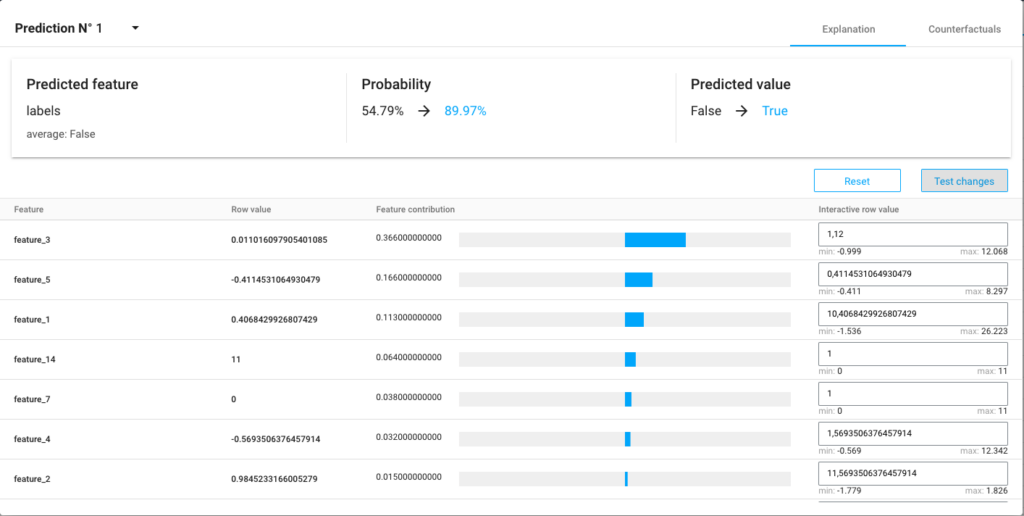
What Makes papAI Unique?
Error Analysis Tree for fairness and transparency
Beyond conventional bias identification, papAI’s Error Analysis Tree for Fairness and Transparency is a sophisticated tool that automatically recognizes and comprehends model faults. Businesses can find hidden problems in a model’s predictions by using this method to break down model performance by dividing the data into subgroups and identifying regions of high inaccuracy.
This analysis tool ensures that fairness and transparency are prioritized by not only assessing model performance across various groups but also identifying specific instances where the model underperforms, making it easier to address issues systematically.
- Beyond Equity measures: The Error Analysis Tree isn’t limited to merely equity-related issues, in contrast to traditional bias analysis, which usually concentrates on equity measures, which assess whether the model treats particular groups unjustly (for example, based on gender, ethnicity, or socioeconomic status). It offers a more comprehensive perspective, looking at performance across a range of data attributes rather than simply pre-established protected groups.
- Root Cause Analysis Without Predefined Groups: Unlike bias analysis tools that require users to define protected groups (such as specific demographic or identity groups) beforehand, the Error Analysis Tree autonomously explores the data to discover and highlight the real sources of errors. It offers a deeper, data-driven exploration of where and why the model fails, providing more accurate insights into underlying problems.
- Performance Improvement Focus: While bias analysis is often focused on measuring discrepancies between groups, error analysis is more performance-oriented. The goal of error analysis is not merely to detect whether disparities exist between groups, but to identify specific areas where the model is weak or inaccurate. This facilitates targeted improvements to the model, making it more effective and fair across all subgroups.
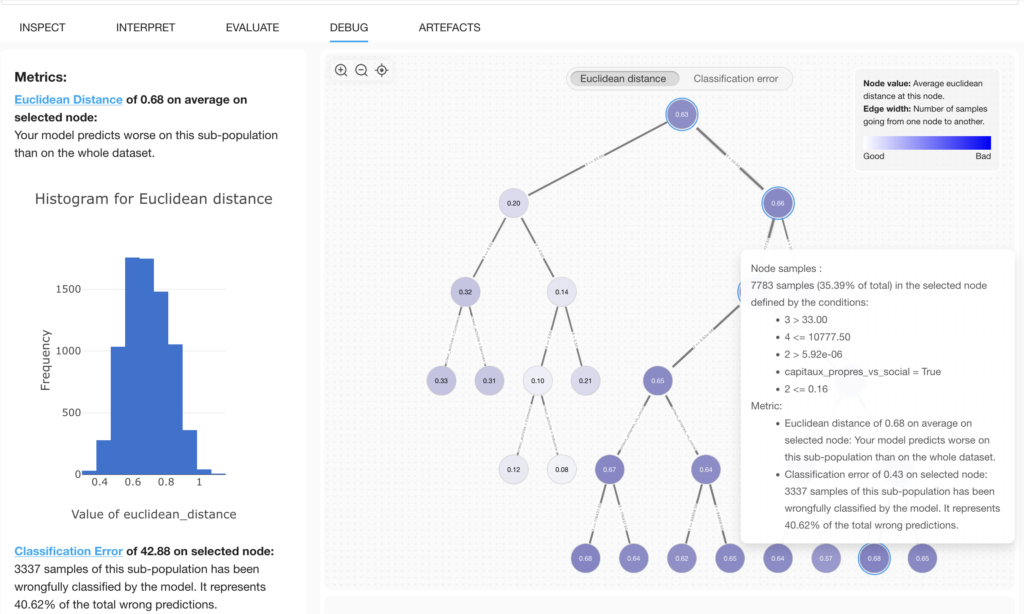
Leverage papAI's AI Capabilities for Superior Model Performance
Learn how papAI solution makes it easier to deploy and manage machine learning models so you can easily realize their full potential.
During the demo, our AI expert will walk you through papAI’s sophisticated features, simplified workflow, and integration to ensure you fully grasp its potential. Use papAI to transform your AI company’s strategy.
or Activate your free session today and see how our AI-driven platform can elevate your AI transformation journey.
AIOps stands for Artificial Intelligence for IT Operations. In defense cybersecurity, it means using AI and machine learning to analyze massive amounts of data, detect anomalies, automate responses, and help security teams identify and mitigate cyber threats faster and more accurately.
Unlike traditional tools that rely on static rules, AIOps continuously learns from data patterns. It detects subtle anomalies in real time, correlates multiple data points, and filters out false positives. This results in faster and more precise detection of complex threats.
AIOps boosts situational awareness, reduces response times, scales easily across complex environments, and greatly improves analyst efficiency by eliminating noise and automating repetitive tasks. It helps teams focus on high-priority threats instead of getting overwhelmed by alerts.
Key factors include compatibility with existing tools, strong machine learning capabilities, scalability, explainable AI features, and a user-friendly interface. It’s also crucial that the platform offers robust support and meets strict security standards.
Not at all. AIOps is designed to augment human capabilities, not replace them. It handles repetitive tasks, reduces false positives, and accelerates detection, allowing human analysts to focus on strategic decision-making, threat hunting, and complex investigations.
Interested in discovering papAI?
Watch our platform in action now
AI’s Role in Translating Complex Defence Documentation
AI’s Role in Translating Complex Defence Documentation The defence sector...
Read MoreHow AI Transforms Technical Documentation in Medical Devices and Life Sciences
How AI Transforms Technical Documentation in Medical Devices and Life...
Read MoreDatategy and Alpha X Join Forces to Strengthen AI-Driven Governance Across EMEA
Datategy and Alpha X Join Forces to Strengthen AI-Driven Governance...
Read More